The Amish in Kansas (12 Communities)
Kansas has long been home to Amish, but has never had a very large Amish population. Kansas Amish communities are either very old – at over 100 years in age – or very young, founded in the past two decades.
However there has recently been an increase in new settlements in the Sunflower State. As of 2023, there are one dozen separate Amish communities in Kansas, numbering approximately 2,400 people.
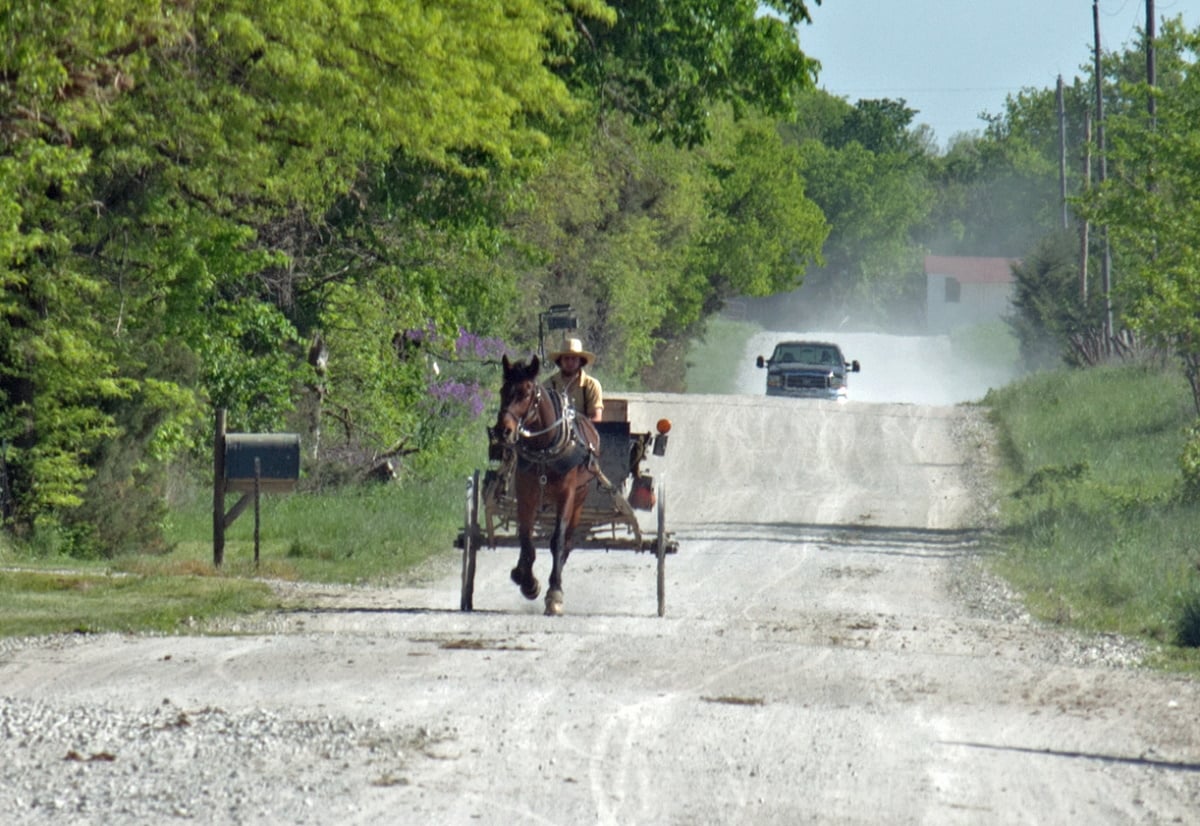
Kansas Amish Communities:
- Yoder– the Yoder settlement (also referred to as Haven), the oldest of the Kansas Amish communities, is located in Reno County in central Kansas
- Labette County – this county in southeast Kansas is home to the state’s two largest Amish communities
- Hutchinson – the Hutchinson community of two church districts is located just a short distance from the Yoder/Haven settlement
- Garnett – the Garnett Amish group in Anderson County has existed for over 100 years
- Other Kansas Amish settlements – at least six Amish settlements have been founded in Kansas since 2017
Yoder Amish Settlement
The village of Yoder has an interesting tale of origin. Yoder was founded by Eli M. Yoder, the son of an Amish bishop from Maryland. In the late 1800s Yoder came to the newly-minted state of Kansas to homestead in Reno County, settling in a location about a dozen miles southwest of the city of Hutchinson.

In 1886 the Missouri Pacific Rail Road constructed a track from Hutchinson to Wichita, which resulted in about 5 acres being split off from the rest of Yoder’s farm. Yoder used the separated area to construct a post office and general store, which became the nucleus of the village.
During the 1880s, Amish migrants from Shelby County, Illinois began to arrive and settle in the region, with the new village of Yoder becoming the center of the community (see GAMEO, “Yoder (Reno County, Kansas, USA)”).
Yoder was once the largest Amish settlement in Kansas, but has been overtaken by some much younger communities (see below). As of 2023, around 275 Amish live here.
The Amish at Yoder are among the most progressive when it comes to technology, allowing bulk milk tanks, rototillers, and tractors for field work (see Living Without Electricity, Stephen Scott and Kenneth Pellman). Due to the high heat in this region of the country some field work may even be done in the evening.
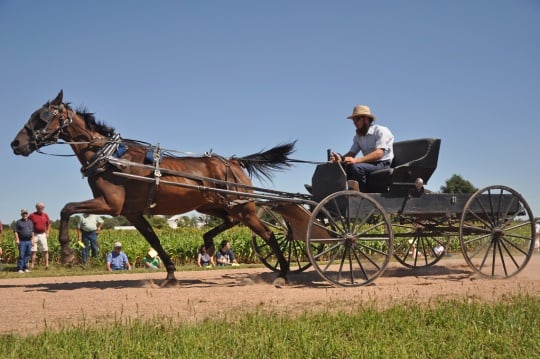
Although Yoder is the center of this community, and still maintains a post office, most Amish homes in this settlement are actually listed as Haven addresses.
Yoder is known to put on an annual Heritage Day celebrating its history and featuring a variety of events, including a buggy race in which Amish take part. The Yoder/Haven community lies very close to a neighboring settlement near the town of Hutchinson.
Labette County (Two Communities)
As of 2023, the state’s two largest Amish settlements can be found in Labette County. Both founded in 2006, they have grown relatively quickly to surpass much older communities in the state in size. The community in the area of Galesburg and Parsons (also lying in neighboring Neosho County) is Kansas’ largest, with about 800 Amish residents in four church districts. This is a settlement with Swiss Amish roots and origins in Missouri.
The settlement at Chetopa has a population of around 300, and is a relatively more progressive group, permitting solar power. Telephones are allowed in small phone shanties on the property, and Amish here hire drivers when needed. Amish-run businesses found in this community include a greenhouse, saddlery, horse supplies and horse training, a leather workshop, windows and siding, baked goods, as well as a bulk food and discount grocery store.
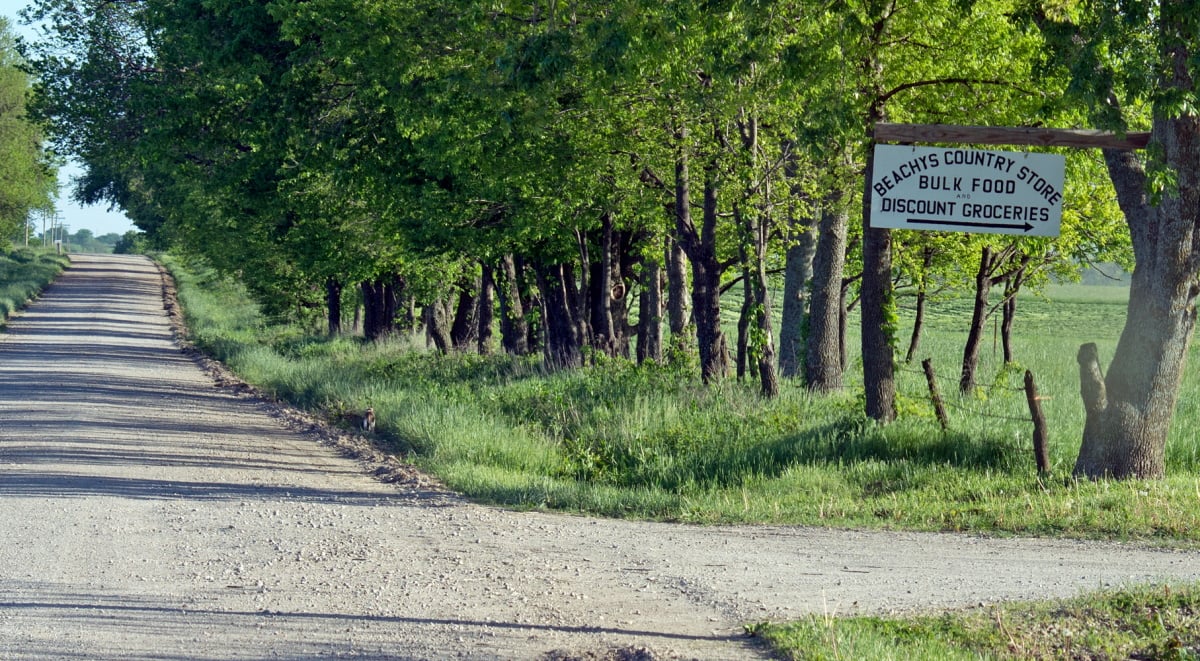
Hutchinson Amish Settlement
The Hutchinson Amish settlement is in fact located to the southwest of the city of 40,000, near the hamlet of Partridge. What ended up becoming the modern-day Hutchinson settlement originated in an early community started around Partridge by Amish arriving at the same time as those who settled near Yoder. Only about 13 miles separate the two villages. The Hutchinson and Yoder area is home to at least two outlets retailing Amish-made furniture.
The Hutchinson Amish settlement numbers two church districts today. Like the Yoder/Haven settlement, it has seen little growth over its 140-year history.
Garnett Amish Settlement
The Amish group at Garnett in Anderson County is the youngest of the three “old” Kansas communities, having been founded in 1903.
Anderson County is located in the eastern part of the state, roughly 50 miles south of Lawrence. Like its counterparts in Yoder and Hutchinson, the Anderson County Amish presence remains small today, at just two church districts in size.

The Amish community itself is located about five miles west of Garnett. Consisting of numerous scattered farms and homes, the settlement spans about 10 miles north to south, and six miles east-west (see Meindl, “Language Use in an Old Order Amish Community in Kansas”, p. 28). Amish at Garnett farm and have also branched out into small businesses, such as carpentry, cabinet making, dog breeding, and selling food products at markets (Meindl p. 32)
The Garnett Amish are liberal when it comes to use of technology. Like other Kansas Amish communities in Reno County, Amish at Garnett use tractors for farming. Tractors are also used for road travel when visiting town (Meindl p. 31).
Most Amish children in the Garnett community attend a small public school in the hamlet of Mount Ida at the southern end of the settlement. Unusual in Amish society, Sunday school is held by Amish in this community at two separate locations, as well as a summer Bible school (see Oklahoma-Kansas Directory, Yoder and Yoder).
The Garnett Amish settlement was founded by Amish from the Haven area of Reno County, Kansas. A year after the arrival of the Reno Amish, they were joined by seven families from a Mississippi Amish settlement (GAMEO, “Anderson County, Kansas Old Order Amish Settlement”).
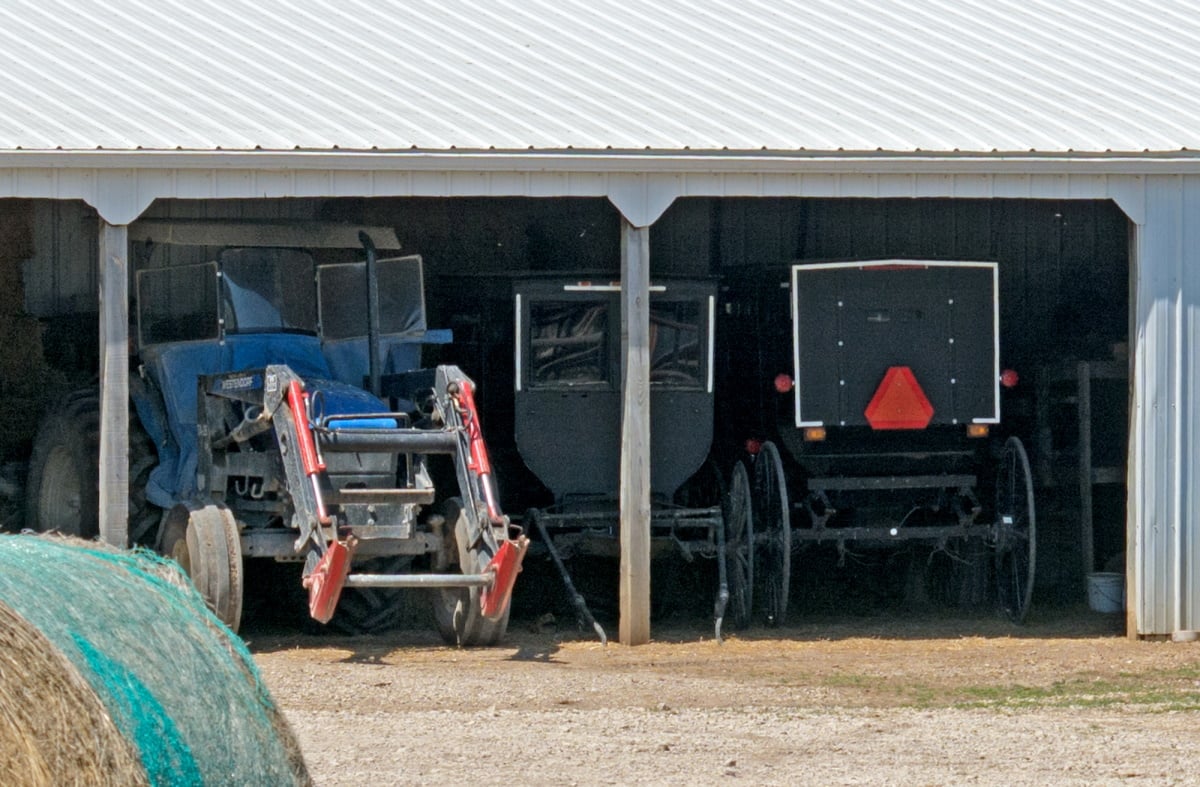
Over the course of the next century, the Garnett settlement fluctuated in size, never growing much larger than a few dozen families. Families moved away while others arrived from places such as Illinois, Oklahoma, Arizona, Oregon, Arkansas, Colorado, and other settlements in Kansas. A low point came in 1947 when the settlement had dwindled to five families (Meindl, p. 26) .
By 1959 the Garnett Amish community had reached a size requiring it to divide into a north and south district (Yoder and Yoder). Today the size of the community has changed little since that division, numbering about three dozen households. The Amish in Anderson County maintain ties with those in Reno County (Meindl p. 102).
Other Kansas Amish Settlements
A number of other settlements have been founded in Kansas over the past two decades.

In 2005, Amish started a community in Bourbon County near Fort Scott, which has since grown to well over 200 people. This is a more conservative group than the Amish in Reno County or Anderson County.
A second community founded not long after, in Marshall County near Axtell and Marysville, has remained small in size.
Since 2017, several other communities have been founded, in Clay, Greenwood, Lyon, and Woodson counties, all remaining small in size. The community in Osage County (2018) is the largest of this group, at over 150 people.
Historical Kansas Amish Settlements
Amish began settling Kansas in the mid- to late-1800s, with communities springing up in various locations across the southern half of the state. Some of these communities were destined to last a long while – sometimes even a few decades – while others disappeared in a matter of years.
The first Amish presence in Kansas was recorded in Lyon County, where a settlement existed from 1869 to 1894. This community eventually disbanded, with families leaving due to poor harvests as well as (likely) over disputes regarding progressive ideas, such as a plan to build a meetinghouse.
Another noteworthy settlement was found in Ford County at Dodge City, aka the “Cowboy Capital of the World”. Amish first began arriving to the area a few miles south of Dodge City in 1906, attracted by advertisements placed in the Sugarcreek Budget newspaper. Promoted in Amish circles by a local land agent, the settlement grew rapidly. Climate challenged the Amish settlers, however, and drought caused many to begin to move away, until the settlement expired in 1929.

A short-lived settlement existed near Hesston in Harvey County, today home to a large Mennonite population. The few Amish who settled here came from Pennsylvania beginning in 1885. Historian David Luthy explains that this small group never had a resident minister, and thus attended church with Amish-Mennonites who had arrived at the same time. After a few years most of the Amish families returned to Pennsylvania, bringing this settlement to an end in 1890.
The longest-lived of presently extinct Kansas Amish settlements was found at Conway Springs in Sumner County. This community lasted from 1914 to 1951. Other Kansas Amish communities were once found at Ness County (Arnold, 1894-1922), Meade County (Plains,1913-1923), as well as another settlement in Ford County (Bucklin, 1903-1922) (this section see Luthy, Settlements that Failed 1840-1960 pp. 123-164).
Kansas, an outpost of Amish settlement
Kansas has long attracted Amish settlement, though its relatively low population today suggests that Amish communities have had difficulty flourishing in this Great Plains state. Like neighboring Oklahoma, Kansas has seen a fair share of Amish settlement throughout the years, but has historically lacked robust population growth.
However, that trend may be changing. Of the twelve Amish communities currently found in the state, nine have been founded since 2005. New groups of Amish have been drawn to settle the Sunflower State, a trend which very well may continue.
Even within its small population, however, Kansas Amish exhibit a degree of diversity. This can be seen reflected in the differences in Ordnung, or church standards and regulations, among the existent communities.
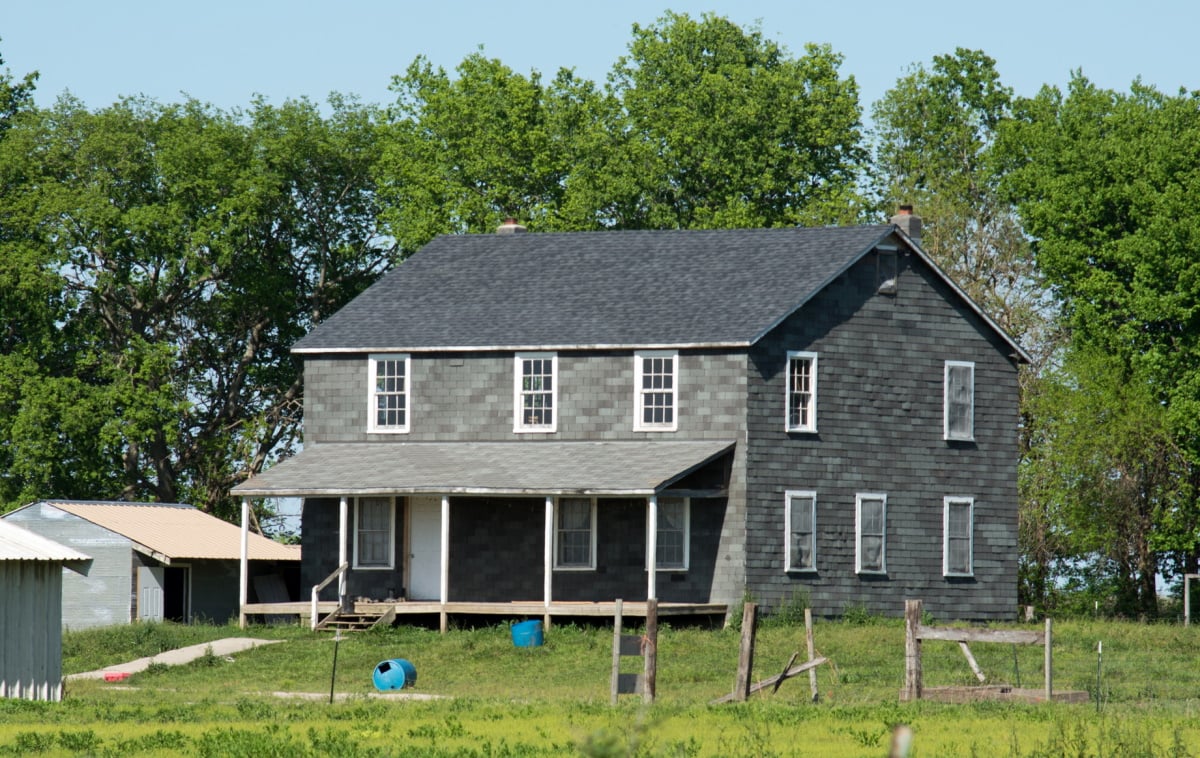
For instance, the church standards of Amish in Reno and Anderson Counties are generally progressive when it comes to technology, seen in their allowance of a wide array of farm machinery, hydraulic power, as well as use of tractors for field work. On the other hand, the community at Parsons/Galesburg would represent a group on the more conservative end of technology allowance.
To take another example, Amish in the community at Fort Scott do not permit indoor plumbing or engines. Differences in Ordnung also reveal differing attitudes toward permissible social behaviors. For example, while the Thayer community permits smoking, Amish in the Anderson County settlement do not (Meindl p. 100).
For more information, see:
“Language Use in an Old Order Amish Community in Kansas”, University of Kansas PhD dissertation, Jörg Meindl
Oklahoma-Kansas Directory: Choteau, Clarita, Garnett, Haven, and Hutchinson (2004). Enos Yoder and Freda Yoder, ed.
The New American Almanac, Raber’s Bookstore (Baltic, Ohio), Ben J. Raber
The Amish in America: Settlements that Failed, 1840-1960, David Luthy
Living Without Electricity, Stephen Scott and Kenneth Pellman
“Amish Population, 2023”. Young Center for Anabaptist and Pietist Studies, Elizabethtown College http://www2.etown.edu/amishstudies/Population_by_State_2023.asp;
“Amish Population in the United States by State, County, and Settlement, 2023” https://groups.etown.edu/amishstudies/files/2023/11/Amish-Pop-2023_by-state-and-county_updated2.pdf
Diener, Harry A. “Yoder (Reno County, Kansas, USA).” Global Anabaptist Mennonite Encyclopedia Online. 1959. Web. 20 November 2010. http://www.gameo.org/encyclopedia/contents/Y61.html.
Beachy, Jonas S. “Anderson County, Kansas, Old Order Amish Settlement.” Global Anabaptist Mennonite Encyclopedia Online. 1953. Web. 20 November 2010. http://www.gameo.org/encyclopedia/contents/A53503.html.
Photo credits: Amish buggy-Walt Hubis; Amishman and girl-Frank Thompson photos; Amish buggy on blacktop-Brent Danley; Amish buggy racer-Frank Thompson photos






Hospital services in El Dorado Springs, Missouri
I represent Cedar County Memorial Hospital, its clinics, and physicians in El Dorado Springs, Missouri. We’d like to reach out to the Amish community in Ft. Scott, Kansas to see if healthcare services are needed and if we can facilitate that. Please reach to me via email. Or you can call the hospital, and they can give you a direct phone number to me. The hospital’s phone is 417-876-2511. Thank you.
Where horse poop go??!!
Hi. Really curious if the Amish have to stop and clean the horse poop up while traveling along the highway. Thx.